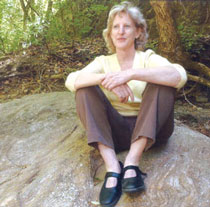Being Jewish
Feature
Feature: Message from the Sources: A Time to Save the Planet

Jews have a decades-long record of protecting the earth, finding Jewish inspiration in rewriting their dominion over the land into tending God’s domain..
The early voices of Jewish environmentalism sprang from the larger era of social change in the 1970s. People were waking up to the idea of personal environmental responsibility and calling for legislation to protect the air and water.
Meanwhile, groups of young Jews were creating new models of religious practice and expression through the emerging havura movement. Against this backdrop, a small handful of rabbis, scholars and laypeople began to mine the canon of ancient Jewish texts, seeking wisdom to inform a new environmental ethic, rooted in Jewish tradition. They did not have to look far.
In Bereshit, they found the story of God’s creation of the natural world as well as the Divine decree that it was “very good.” They also found that, depending on which version of the creation story one read (go back and check, there are two), human beings were either meant to have full dominion over the land or to be the earth’s stewards through “tilling and tending” it. The problem was, over time, dominion had somehow overshadowed any notion of stewardship.
The movement’s pioneers—Rabbi Arthur Waskow, who founded the Shalom Center in 1983; Jewish animal rights activist Roberta Kalechofsky; and Ellen Bernstein, who started one of the first national Jewish environmental groups, Shomrei Adamah, in 1988—set about reclaiming that sense of responsibility to the land. They pointed to the agricultural foundations of many Jewish holidays, such as Sukkot, Passover and Shavuot. They observed shemita, which requires that farmed land “rest” every seventh year, and bal tash’hit (“do not destroy”), which mandates against wasteful consumption. They also pointed to Shabbat as a day of rest—not only from work, but from the car- and electricity-filled pace of everyday life. Unfortunately, the initial response from the larger Jewish community was not always welcoming. “The first review ofSeasons of Our Joy”—a book Waskow published in the early 1980s connecting Jewish festivals to the natural cycles of the year—“called it disgustingly pagan!” Waskow recalled.
Over the next 10 years, these ideas began to percolate, while a community of activists emerged who viewed their commitments to the earth as uniquely intertwined with their faith. In 1993, with the support of then-Vice President Al Gore and scientist Carl Sagan, the Coalition on the Environment and Jewish Life was born. COEJL became a vigorous force in the Jewish organizational world, launching educational programs and resources, hosting an annual conference and lobbying for environmental issues in Washington.
The example set by the early leaders has been carried forward over the last decade by organizations and individuals spreading the idea of sustainability as both a Jewish value and a means of reenergizing Judaism. This next wave of Jewish environmentalists includes people like Nigel Savage, who founded Jewish sustainability organization Hazon; Nili Simhai, director of the youth-focused educational nonprofit Teva; Adam Berman, responsible for greening the Isabella Freedman Jewish Retreat Center and for founding the Jewish agricultural fellowship, Adamah, in Connecticut; and Evonne Marzouk, who launched the Orthodox environmental group Canfei Nesharim.
In response to grass-roots efforts, eco-awareness continues to blossom in mainstream Judaism. Synagogues such as the Jewish Reconstructionist Congregation in Evanston, Illinois, and Adat Shalom in Bethesda, Maryland, are greening their facilities by installing solar panels, avoiding disposable dishware and using energy-saving compact fluorescent light bulbs. And organizations that do not have explicit environmental missions are incorporating eco-focused tracks into their programs.
Waskow commented that while the Jewish environmental movement has made significant strides in increasing the eco-consciousness of the Jewish community, it has not yet made an impact on mainstream Jewish policy making. The day when every Jewish organization and lobby group includes environmental health on their agenda is still in the future. Yet the seeds of the movement have been planted—and are already bearing delicious fruit. H
Leah Koenig (www.leahkoenig.com) is a freelance writer in New York.










 Facebook
Facebook Instagram
Instagram Twitter
Twitter
Leave a Reply